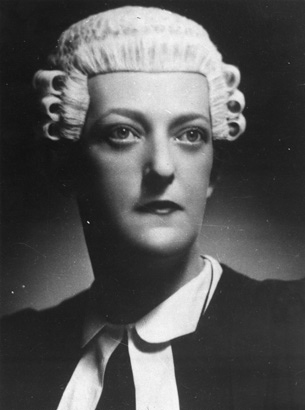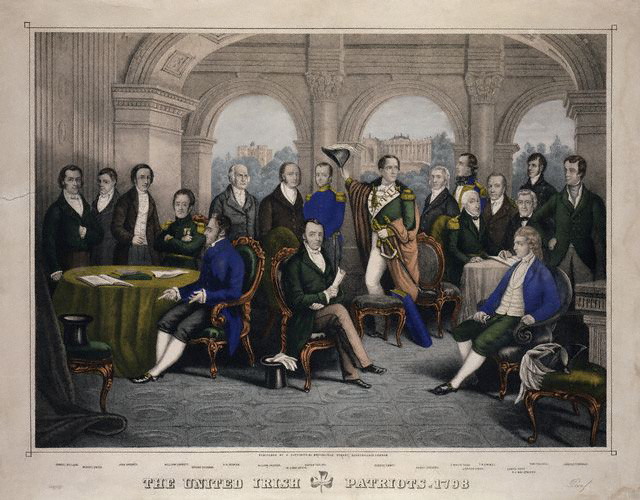|
Robert Johnson (1745–1833)
Robert (Bob) Johnson (1745–1833) was an Irish barrister, politician and judge. He sat in the Irish House of Commons and was a judge of the Court of Common Pleas (Ireland).Ball, F. Elrington ''"The Judges in Ireland 1221-1921"'' London John Murray 1926 p.333 In 1803 he published a number of attacks on various members of the Irish Government in the form of a series of letters written under the pseudonym ''"Juverna"''.Ball pp.246-7 The letters caused a major scandal, and after some delay, Johnson was identified as the author. He was prosecuted after a further delay and convicted of seditious libel. He was spared a prison sentence but forced to resign from the Bench, and retired into private life, where he continued his feud with the Dublin administration. His motives for writing the ''Juverna'' letters are unclear, although he had made a similar anonymous attack on a senior Irish judge, Christopher Robinson, in 1779. Biography He was born in Dublin, eldest son of Thomas John ... [...More Info...] [...Related Items...] OR: [Wikipedia] [Google] [Baidu] |
Barrister
A barrister is a type of lawyer in common law jurisdiction (area), jurisdictions. Barristers mostly specialise in courtroom advocacy and litigation. Their tasks include arguing cases in courts and tribunals, drafting legal pleadings, jurisprudence, researching the law and giving legal opinions. Barristers are distinguished from solicitors and other types of lawyers (e.g. chartered legal executives) who have more direct access to clients, and may do transactional legal work. In some legal systems, including those of Anglo-Dutch law, South Africa, Stockholm Institute for Scandinavian Law#Scandinavian Law, Scandinavia, Law of Pakistan, Pakistan, Law of India, India, Law of Bangladesh, Bangladesh and the Crown Dependencies of Law of Jersey, Jersey, Guernsey#Politics, Guernsey and the Manx Law, Isle of Man, ''barrister'' is also regarded as an honorific. In a few jurisdictions barristers are usually forbidden from "conducting" litigation, and can only act on the instructions of ano ... [...More Info...] [...Related Items...] OR: [Wikipedia] [Google] [Baidu] |
Henry Grattan
Henry Grattan (3 July 1746 – 4 June 1820) was an Irish politician and lawyer who campaigned for legislative freedom for the Irish Parliament in the late 18th century from Britain. He was a Member of the Irish Parliament (MP) from 1775 to 1801 and a Member of Parliament (MP) in Westminster from 1805 to 1820. He has been described as a superb orator and a romantic. With generous enthusiasm he demanded that Ireland should be granted its rightful status, that of an independent nation, though he always insisted that Ireland would remain linked to Great Britain by a common crown and by sharing a common political tradition. Grattan opposed the Act of Union 1800 that merged the Kingdoms of Ireland and Great Britain, but later sat as a member of the united Parliament in London. Early life Henry Grattan was born in Fishamble Street, Dublin, and baptised in the nearby church of St. John the Evangelist in 1746. A member of the Anglo-Irish elite of Protestant background, Grattan was ... [...More Info...] [...Related Items...] OR: [Wikipedia] [Google] [Baidu] |
County Laois
County Laois ( ; ) is a county in Ireland. It is part of the Eastern and Midland Region and in the province of Leinster. It was known as Queen's County from 1556 to 1922. The modern county takes its name from Loígis, a medieval kingdom. Historically, it has also been known as County Leix. Laois County Council is the local authority for the county, and is based in Portlaoise. At the 2022 census, the population of the county was 91,657, an increase of 56% since the 2002 census. History Prehistoric The first people in Laois were bands of hunters and gatherers who passed through the county about 8,500 years ago. They hunted in the forests that covered Laois and fished in its rivers, gathering nuts and berries to supplement their diets. Next came Ireland's first farmers. These people of the Neolithic period (4000 to 2500 BC) cleared forests and planted crops. Their burial mounds remain in Clonaslee and Cuffsborough. Starting around 2500 BC, the people of the Bronze Age lived ... [...More Info...] [...Related Items...] OR: [Wikipedia] [Google] [Baidu] |
Ballybrittas
Ballybrittas (, IPA: �bˠalʲəˈbʲɾʲɪt̪ˠaːʃ is a small village in the northeast of County Laois, Ireland situated on the R445 about 5 km SW of Monasterevin, County Kildare. Formerly on the N7 Dublin - Limerick road, the village is now bypassed by the M7 motorway. Amenities Businesses in the village include a pub, a service station, and a number of small businesses. The local schools and churches are nearby in Rath and Killenard, while the local Gaelic Athletic Association club Courtwood is nearby. Notable people * Fergal Byron (born 1974), Laois Gaelic footballer * Charlotte Dease (1873-1953), author * Edmund Dease (1829-1904), Irish politician *Robert Johnson Robert Leroy Johnson (May 8, 1911August 16, 1938) was an American blues musician and songwriter. His singing, guitar playing and songwriting on his landmark 1936 and 1937 recordings have influenced later generations of musicians. Although his r ... (1745-1833) Irish judge and pamphleteer * Eddie K ... [...More Info...] [...Related Items...] OR: [Wikipedia] [Google] [Baidu] |
Milltown, Dublin
Milltown () is a suburb and townland on the southside of Dublin, Ireland. Milltown was the site of several working mills on the River Dodder and is also the location of the meeting of the River Slang with the Dodder. It is located adjacent to other suburban areas such as Windy Arbour, Ranelagh, Rathmines, Dartry, Clonskeagh, and Donnybrook. History The townland of Milltown, also known as Milton, was so named from at least the 14th century. Both Milltown and Clonskeagh were liberties of Dublin following the 13th-century Anglo-Norman invasion of Ireland. In his 1903 work, ''A History of the County Dublin'', the historian Francis Elrington Ball describes Milltown as being the "scene of industrial enterprise" from a "very early period" and that as "early as the fourteenth century the existence of a mill is mentioned". Ball also states that "mediaeval quarrying operations carried on at Milltown" provided stone for repairs to Dublin's Christ Church Cathedral. By the 18th c ... [...More Info...] [...Related Items...] OR: [Wikipedia] [Google] [Baidu] |
Philipstown (Parliament Of Ireland Constituency)
Philipstown in King's County was a constituency represented in the Irish House of Commons The Irish House of Commons was the lower house of the Parliament of Ireland that existed from 1297 until the end of 1800. The upper house was the Irish House of Lords, House of Lords. The membership of the House of Commons was directly elected, ... until 1800. The town was later renamed Daingean in 1922. Members of Parliament References * {{coord missing, County Offaly Historic constituencies in County Offaly Constituencies of the Parliament of Ireland (pre-1801) 1800 disestablishments in Ireland Constituencies disestablished in 1800 Daingean ... [...More Info...] [...Related Items...] OR: [Wikipedia] [Google] [Baidu] |
Parliament Of Ireland
The Parliament of Ireland () was the legislature of the Lordship of Ireland, and later the Kingdom of Ireland, from 1297 until the end of 1800. It was modelled on the Parliament of England and from 1537 comprised two chambers: the Irish House of Commons, House of Commons and the Irish House of Lords, House of Lords. The Lords were members of the Peerage of Ireland, Irish peerage ('Lords Temporal, lords temporal') and Bishop, bishops ('Lords Spiritual, lords spiritual'; after the Reformation, Church of Ireland bishops). The Commons was directly elected, albeit on a very restricted Suffrage, franchise. Parliaments met at various places in Leinster and Munster, but latterly always in Dublin: in Christ Church Cathedral, Dublin, Christ Church Cathedral (15th century),Richardson 1943 p.451 Dublin Castle (to 1649), Chichester House (1661–1727), the The King's Hospital, Blue Coat School (1729–31), and finally a purpose-built Parliament House, Dublin, Parliament House on College G ... [...More Info...] [...Related Items...] OR: [Wikipedia] [Google] [Baidu] |
Suicide
Suicide is the act of intentionally causing one's own death. Risk factors for suicide include mental disorders, physical disorders, and substance abuse. Some suicides are impulsive acts driven by stress (such as from financial or academic difficulties), relationship problems (such as breakups or divorces), or harassment and bullying. Those who have previously attempted suicide are at a higher risk for future attempts. Effective suicide prevention efforts include limiting access to methods of suicide such as firearms, drugs, and poisons; treating mental disorders and substance abuse; careful media reporting about suicide; improving economic conditions; and dialectical behaviour therapy (DBT). Although crisis hotlines, like 988 in North America and 13 11 14 in Australia, are common resources, their effectiveness has not been well studied. Suicide is the 10th leading cause of death worldwide, accounting for approximately 1.5% of total deaths. In a given year, ... [...More Info...] [...Related Items...] OR: [Wikipedia] [Google] [Baidu] |
Act Of Union 1800
The Acts of Union 1800 were parallel acts of the Parliament of Great Britain and the Parliament of Ireland which united the Kingdom of Great Britain and the Kingdom of Ireland (previously in personal union) to create the United Kingdom of Great Britain and Ireland. The acts came into force between 31 December 1800 and 1 January 1801, and the merged Parliament of the United Kingdom had its first meeting on 22 January 1801. Provisions of the acts remain in force, with amendments and some Articles repealed, in the United Kingdom, but they have been repealed in their entirety in the Republic of Ireland. Name Two acts were passed in 1800 with the same long title: ''An Act for the Union of Great Britain and Ireland''. The short title of the act of the British Parliament is Union with Ireland Act 1800 ( 39 & 40 Geo. 3. c. 67), assigned by the Short Titles Act 1896. The short title of the act of the Irish Parliament is Act of Union (Ireland) 1800 (40 Geo. 3. c. 38 (I)), assigned ... [...More Info...] [...Related Items...] OR: [Wikipedia] [Google] [Baidu] |
Irish Rebellion Of 1798
The Irish Rebellion of 1798 (; Ulster Scots dialect, Ulster-Scots: ''The Turn out'', ''The Hurries'', 1798 Rebellion) was a popular insurrection against the British Crown in what was then the separate, but subordinate, Kingdom of Ireland. The main organising force was the Society of United Irishmen. First formed in Belfast by Presbyterianism, Presbyterians opposed to the landed Protestant Ascendancy, Anglican establishment, the Society, despairing of reform, sought to secure a republic through a revolutionary union with the country's Catholic Church, Catholic majority. The grievances of a rack-rented tenantry drove recruitment. While assistance was being sought from the French First Republic, French Republic and from democratic militants in Britain, martial-law seizures and arrests forced the conspirators into the open. Beginning in late May 1798, there were a series of uncoordinated risings: in the counties of County Carlow, Carlow and County Wexford, Wexford in the southeast ... [...More Info...] [...Related Items...] OR: [Wikipedia] [Google] [Baidu] |
Hillsborough (Parliament Of Ireland Constituency)
Hillsborough was a constituency represented in the Irish House of Commons until 1800. History In the Patriot Parliament of 1689 summoned by James II of England, James II, Hillsborough was not represented. Members of Parliament, 1662–1801 *1662–1666 Robert Colville (Irish MP), Sir Robert Colville and Carrol Bolton 1689–1801 Notes References Bibliography * * {{County Down constituencies Constituencies of the Parliament of Ireland (pre-1801) Historic constituencies in County Down 1662 establishments in Ireland 1800 disestablishments in Ireland Constituencies established in 1662 Constituencies disestablished in 1800 ... [...More Info...] [...Related Items...] OR: [Wikipedia] [Google] [Baidu] |





